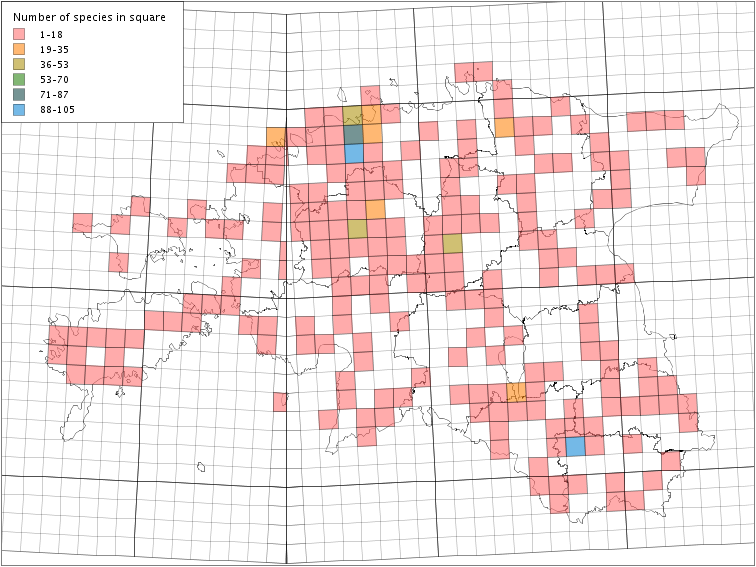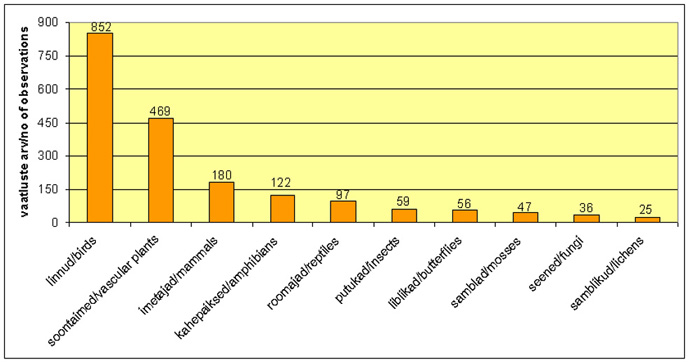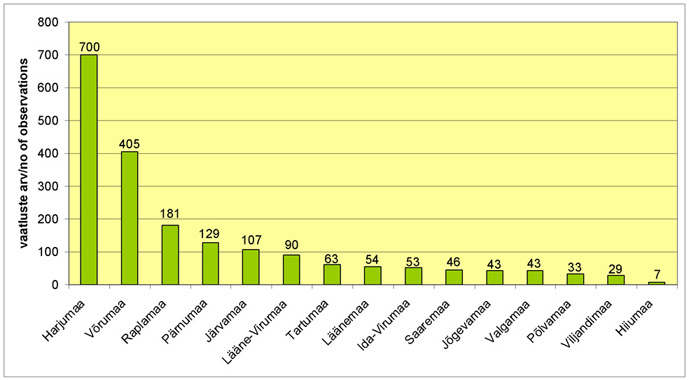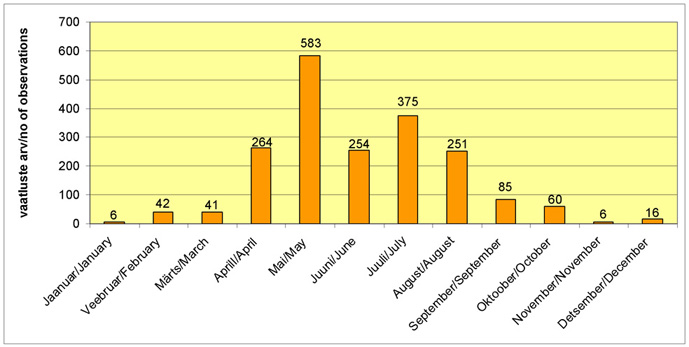Report of database usage in 2012
USING OF NATURE OBSERVATIONS DATABASE IN 2012
In 2012, users submitted 1983 observations to the Nature
Observations Database. This map shows distribution of inserted observations
in 2012.

By groups of species inserted observations divided as
follow (here are only TOP 10 of species groups):
1) birds - 852 observations,
2) vascular plants - 469 observations,
3) mammals - 180 observations,
4) amphibians - 122 observations,
5) reptiles - 97 observations,
6) insects (not include butterflies) - 59 observations;
7) butterflies - 56 observations,
8) mosses - 47 observations,
9) fungi - 36 observations.
10) lichens - 25 observations.

The most popular species which observations were entered were:
White stork (Ciconia ciconia) 137 observations, followed Grass frog (Rana temporaria) 36, Roe deer (Capreolus capreolus) 34, Lesser butterfly orchid (Platanthera bifolia) 27, Common toad (Bufo bufo) 26, Grass snake (Natrix natrix) 22 and Crane (Grus grus) and Sand lizard (Lacerta agilis) 21 observations. Summary observations of 699 species were entered during the year.
Observations of species, which are under nature
conservation in Estonia numbered 750: 21 of
these were observations of species under protection category I , 96 under
protection category II and 633 under protection category III. It was 38% from all entered observations.
136 persons entered their observations to the Nature
Observations Database in 2012. 56 of them inserted three or more
observations, 24 of them inserted more than 10 observations and 3 of them inserted more than 100 observations. It was more than in 2011.
By county: users entered more than 100 observations to
the Nature Observations Database from five counties. First was Harju (700). Followed Võru (405), Rapla (181), Pärnu (129), Järva (107) and Lääne-Viru (90).

Observations submitted to the database were more frequent
in spring and in summer. The biggest numbers of inputs were in May (583), July (375) and April (264).
